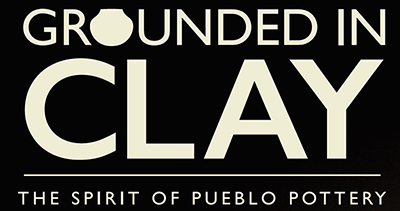Loren Aragon
Acoma Pueblo
Curator Loren Aragon (Acoma Pueblo) is a former mechanical engineer and now full-time fashion designer and multimedia artist.
Loren chose the following for the Grounded in Clay exhibit:
The Acceptance of Paradise
I am from the Acoma Pueblo of New Mexico, where the art of making pottery has developed across the centuries to become, for some people, a viable livelihood, and it continues to be a source of inspiration for a diverse range of art forms, including my own work in fashion design. I tried my hand at throwing clay at an early age. I was often told that the connection we all have to the clay is what binds us to the earth.
Pottery has been a part of my family for years, my earliest recollection being that of my grandmother and her friends forming small pots and animal figurines. I also saw my mother transform clay into little pots and animals, but most often I saw her painting more conventional/modern or poured ceramic pots and figurines. I have always considered our pottery to be like fine china, with thin wall construction and intricate, fine-line geometric design details. These characteristics distinguish Acoma pottery from that of neighboring Pueblos. What really stands out for me in all our pottery, both ancestral and modern, is the bond to the maker. As I look at a piece, I often wonder, what was the story here? What were the thoughts or prayers that went into this vessel? Did the maker realize that their legacy would live on with our people today?
The iconic parrot design has always been of interest to me, and it is the reason I am drawn to this pot. I am fascinated by the symbols of life associated with the parrot and by the many stories featuring the bird told by Acoma people. In my lifetime, I have learned several such stories from our elders. My grandfather told me that parrots migrated this far north from their southern homelands. Others say that parrots were brought through Spanish trade routes and were traded with the Pueblos so that their colorful feathers could be used for dance regalia and other adornments. My favorite story about the parrot and its association with Acoma is that of a group of women who returned to the Pueblo. They were descendants of families who had been taken from Acoma by Spanish conquistadors. The women returned knowing very little Keres, but knew enough to communicate with the elders of the village. They came back with parrots in their possession and took care of them. The women could not be identified and had no relatives to return to, so the elders assigned them a new clan: the Parrot Clan. The parrot shown here could have originated from any of these stories, its depiction with flowers and vegetation being either the recollection of the women who returned to the Pueblo or an observation of the bird among plants growing abundantly after monsoon rains.

